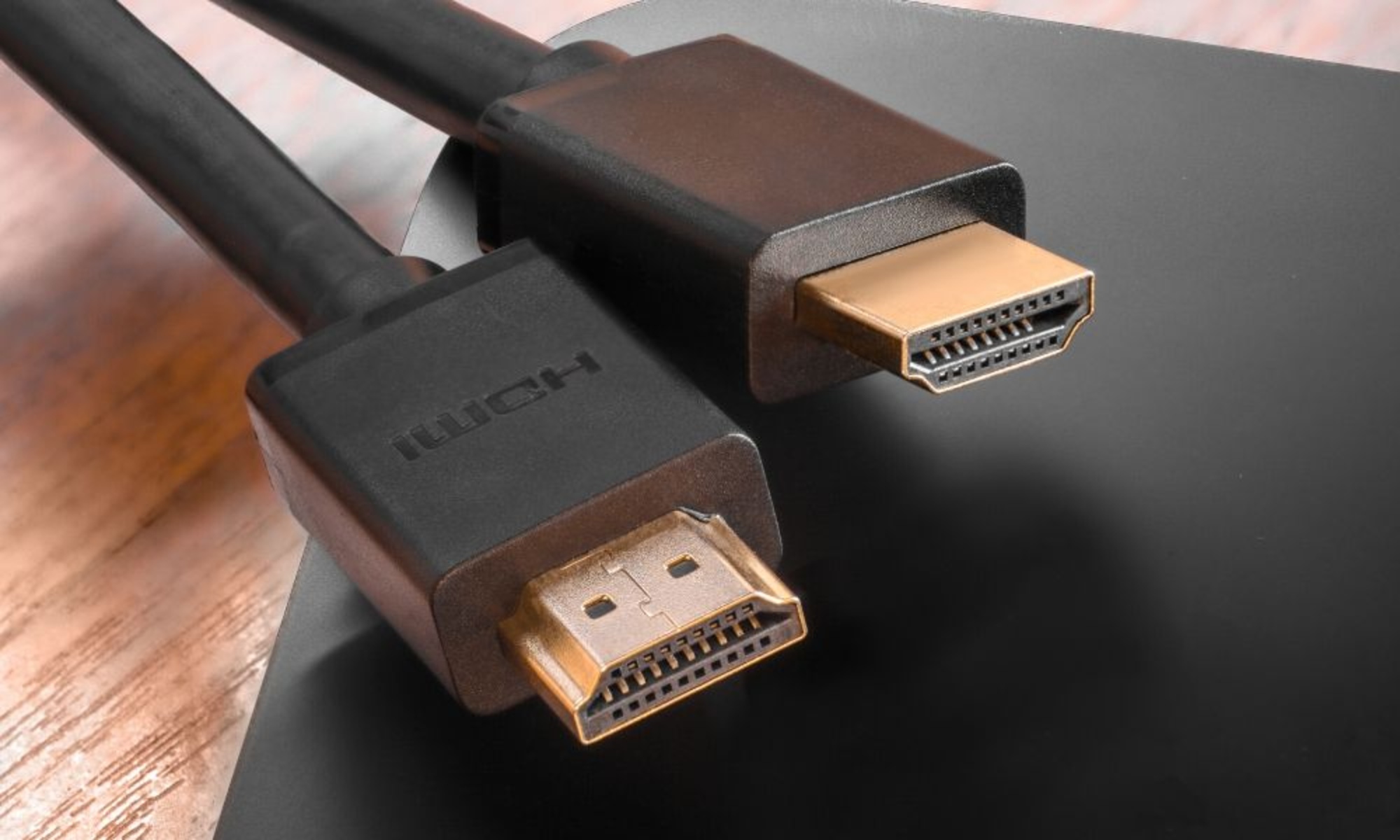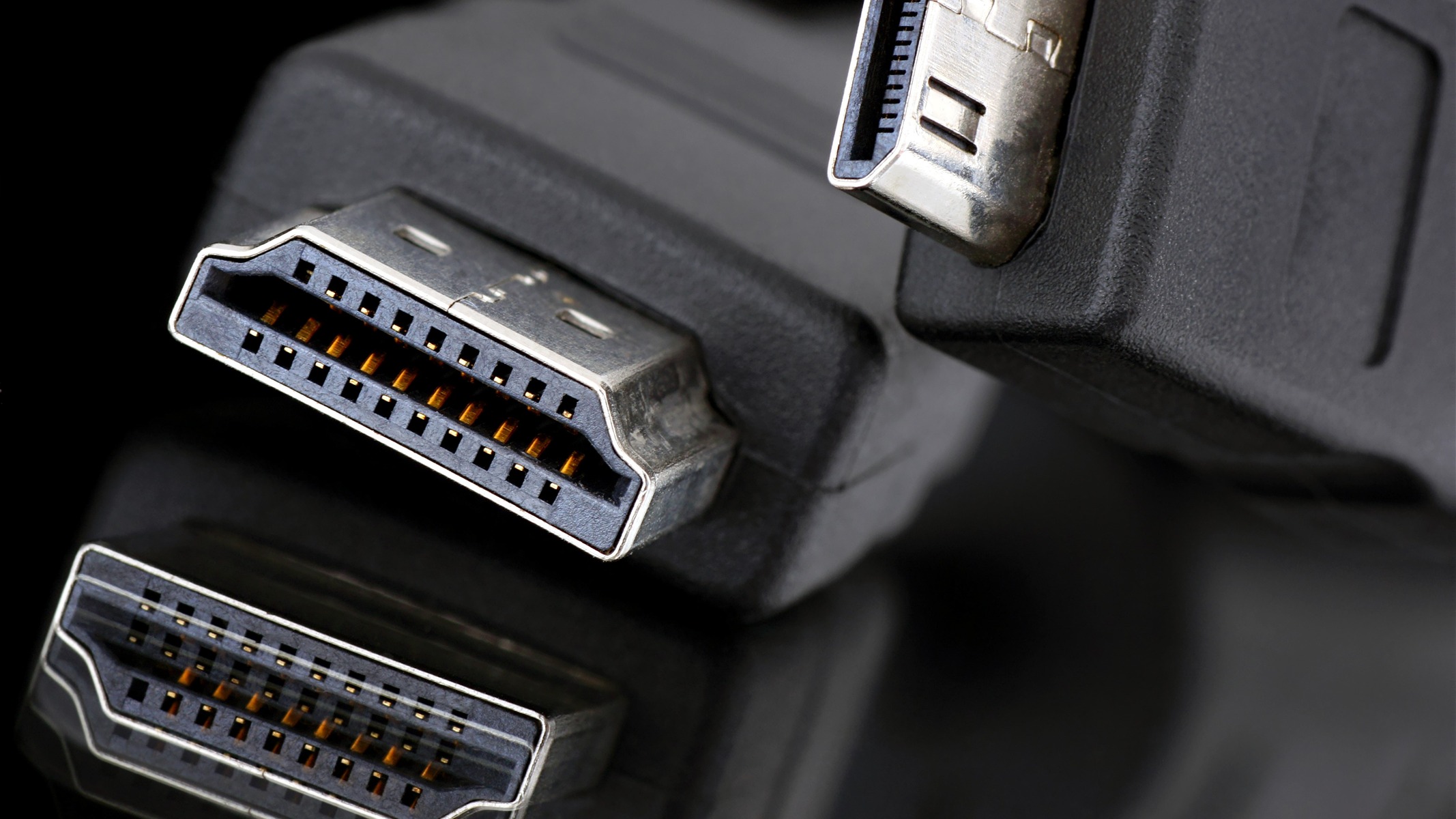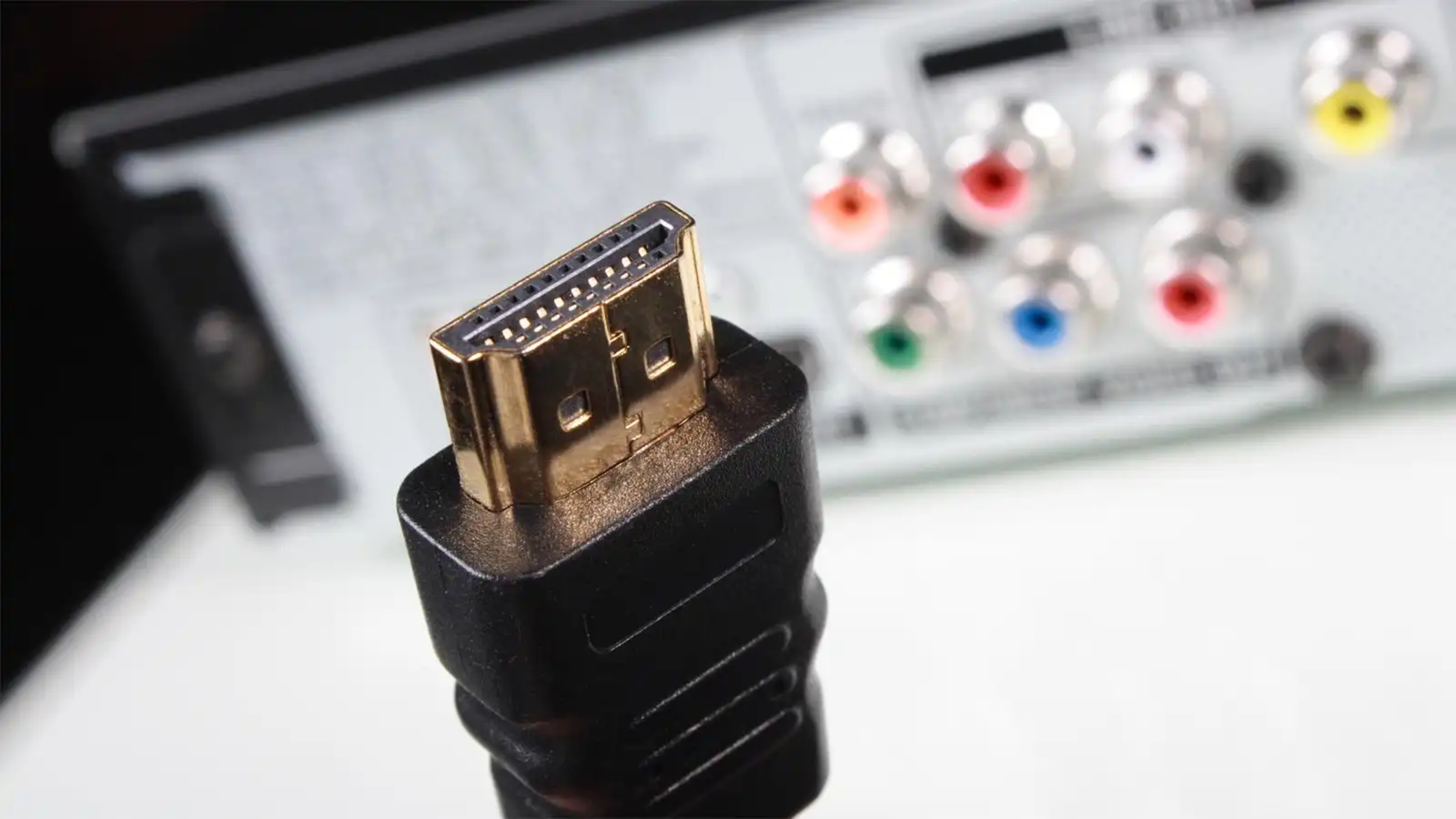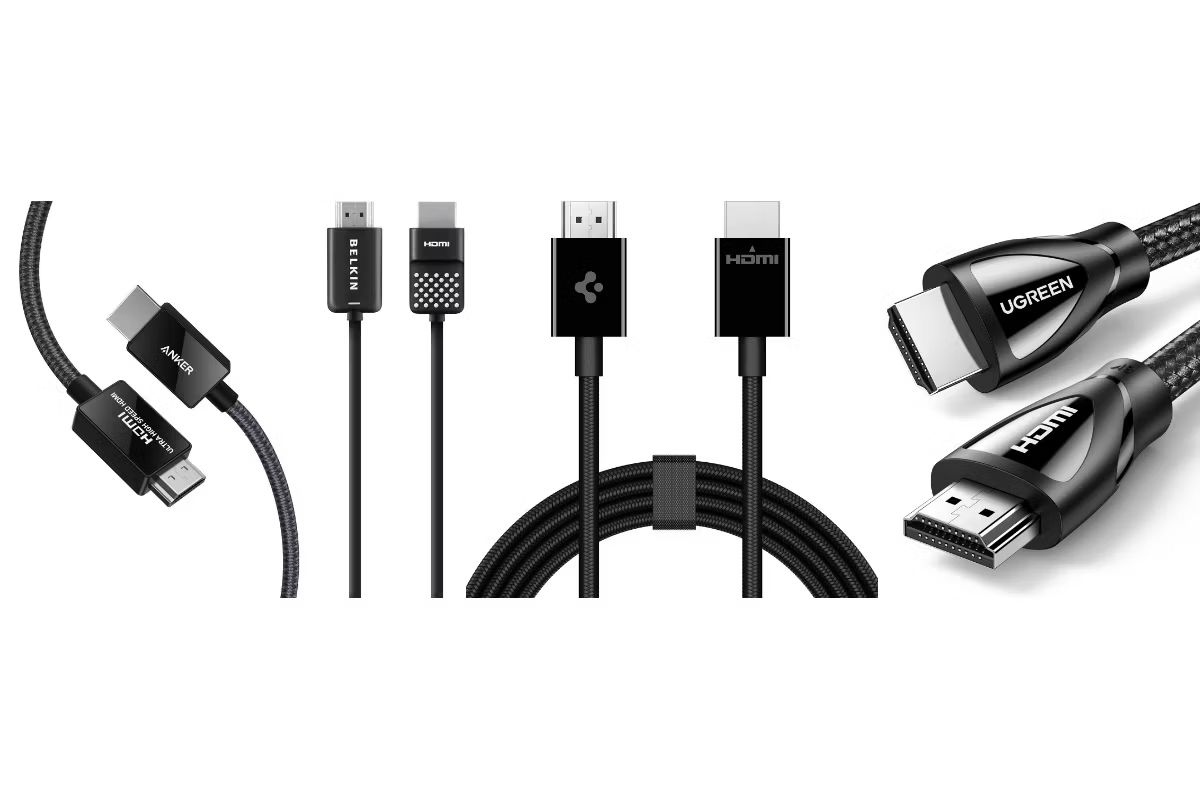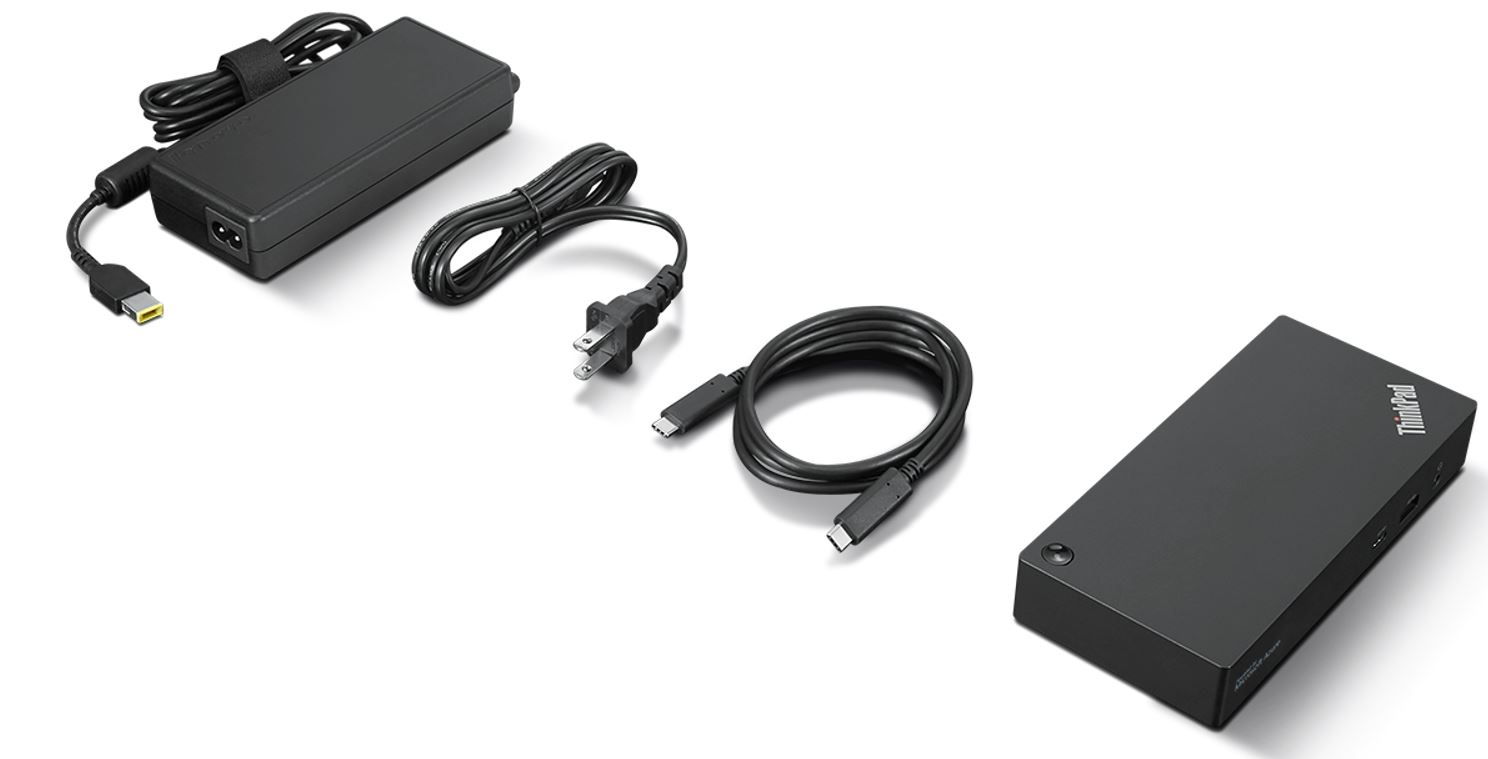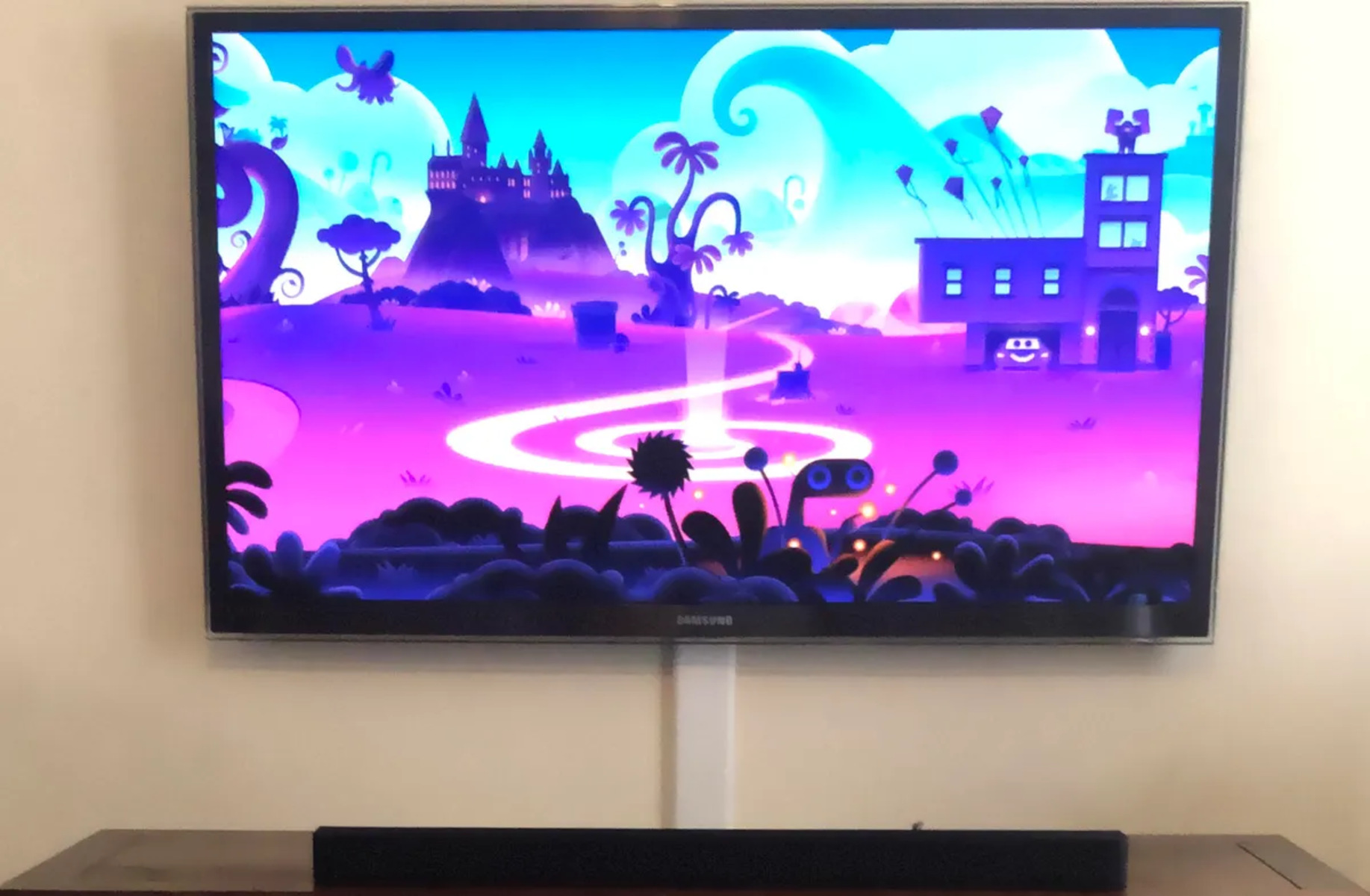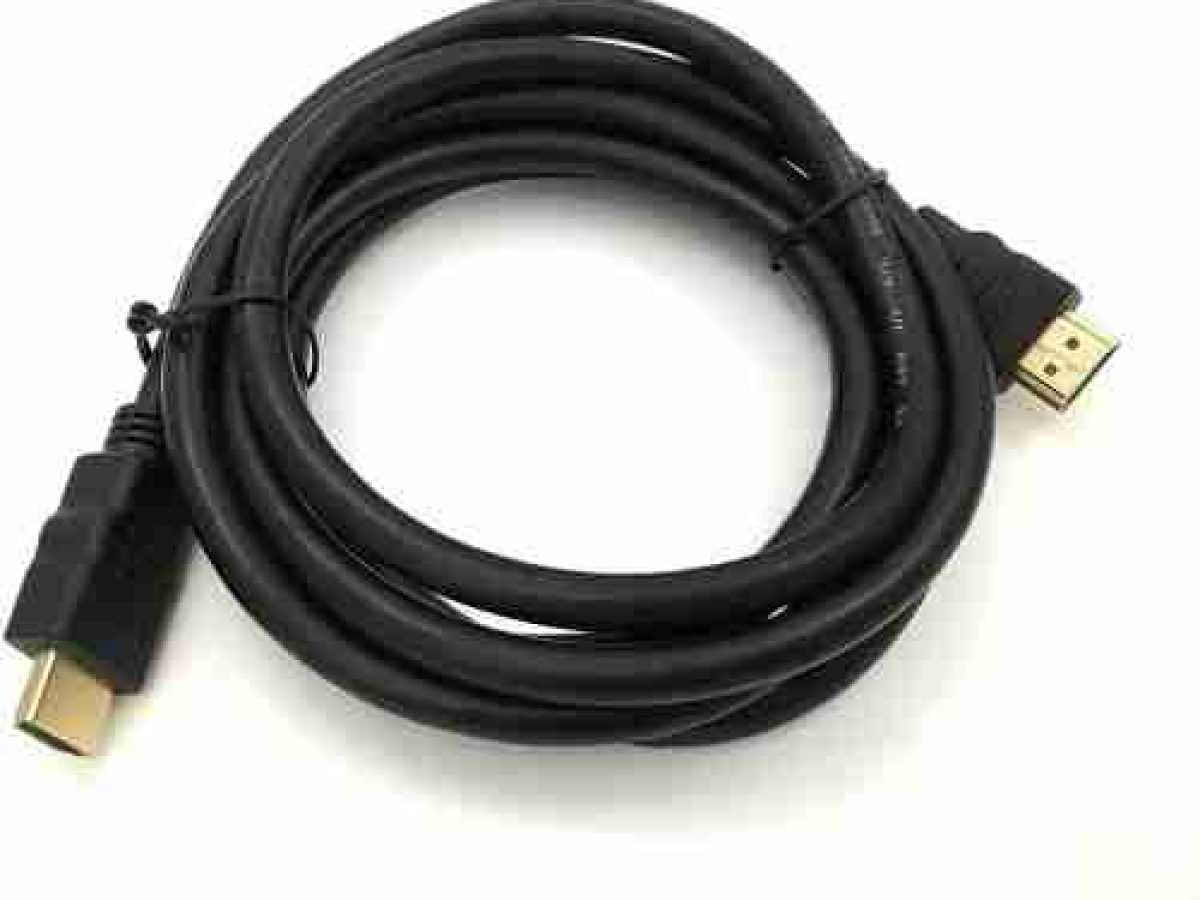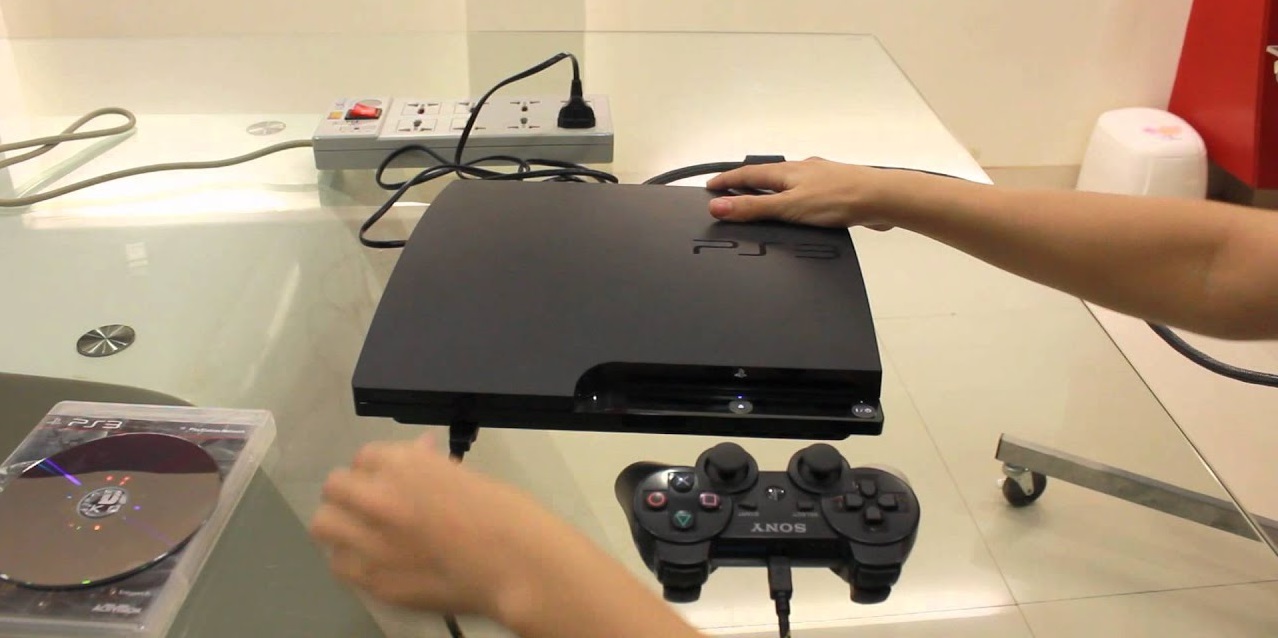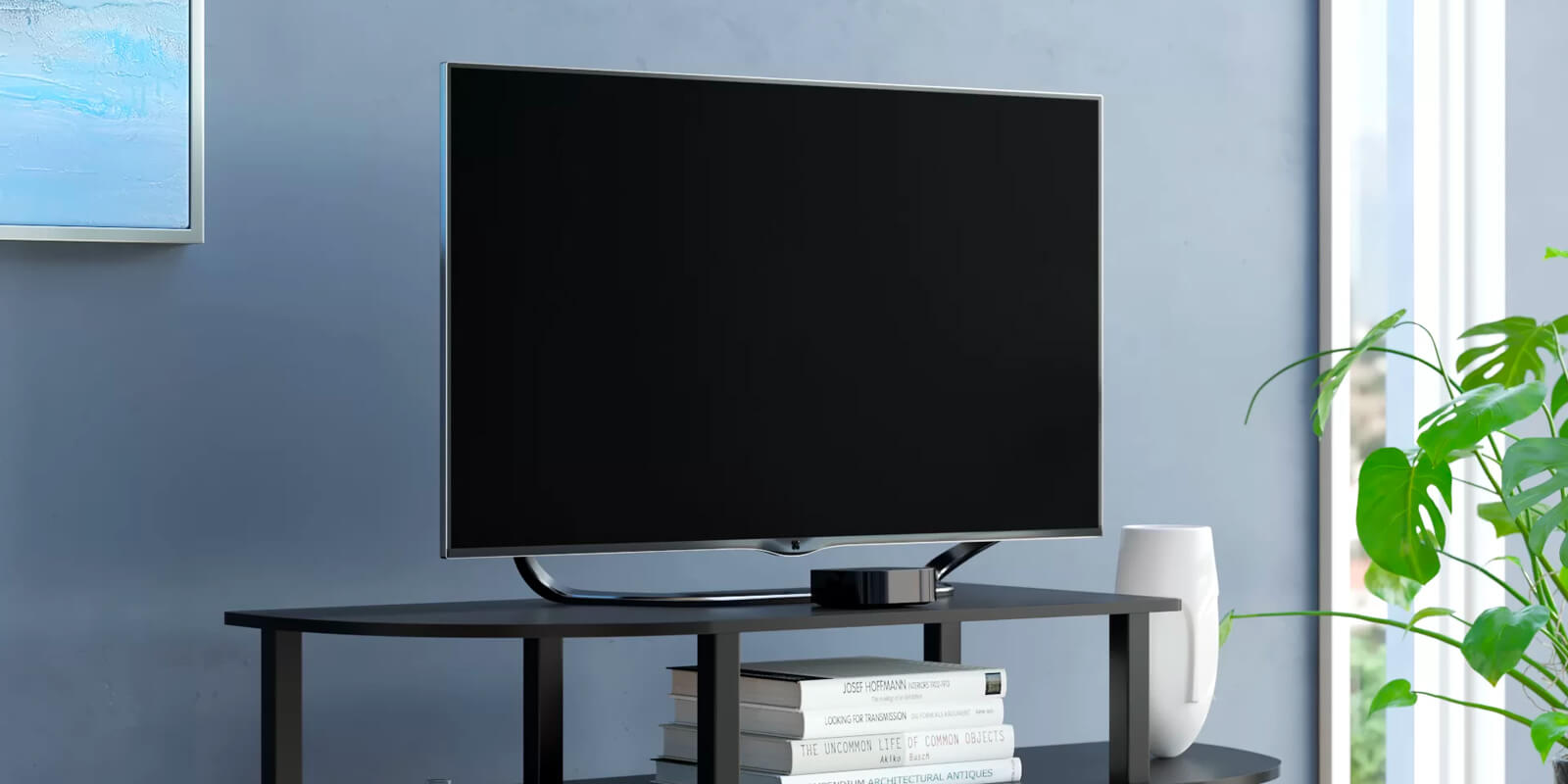Introduction
HDMI (High-Definition Multimedia Interface) cords have become an integral part of our lives, connecting various devices to display high-quality audio and video signals. Whether you’re setting up a home theater system, connecting your gaming console to a TV, or presenting a slideshow on a projector, understanding HDMI cords is essential.
In this article, we will explore what HDMI cords are, how they work, the different types available, their specifications, and common uses. We’ll also provide tips on how to use these cords effectively and troubleshoot any issues that may arise.
With the rapid advancements in technology, HDMI cords offer a convenient and reliable solution for connecting devices, eliminating the need for multiple cables and adapters. These cords enable seamless transmission of uncompressed audio and video signals, providing a superior viewing experience.
Whether you’re a tech enthusiast, a movie lover, or someone looking for a simple solution to connect devices, understanding the basics of HDMI cords will empower you to make informed choices and enhance your multimedia setup.
Let’s dive into the world of HDMI cords and explore the wonders they bring to our digital lives.
What is HDMI?
HDMI, or High-Definition Multimedia Interface, is a technology that allows for the transmission of high-quality audio and video signals between different electronic devices. It has rapidly become the standard for connecting devices such as TVs, DVD players, gaming consoles, and computers.
Before HDMI, users had to rely on a variety of cables, such as component cables, composite cables, and audio cables, to connect their devices. HDMI revolutionized this by providing a single cable solution that could transmit both audio and video signals simultaneously, eliminating the clutter and confusion caused by multiple cables.
HDMI supports high-definition formats, enabling users to enjoy clear and sharp images, as well as immersive sound. It can carry resolutions from 480i to 8K, making it suitable for a wide range of devices and applications.
In addition to transmitting audio and video, HDMI also supports other data, such as control signals and Ethernet connectivity. This means that devices connected via HDMI cords can communicate with each other and share information, enhancing the overall functionality and user experience.
HDMI cords have evolved over the years, with each new version offering improved features and capabilities. The latest HDMI 2.1 standard, for example, supports higher refresh rates and greater bandwidth, enabling features like 8K resolution, variable refresh rate (VRR), and auto low latency mode (ALLM).
Overall, HDMI is a versatile and widely adopted technology that has simplified the process of connecting devices and delivering high-quality audio and video content. Its ease of use, compatibility, and ability to transmit multiple types of data have made HDMI an essential component of modern multimedia setups.
How Does an HDMI Cord Work?
An HDMI cord functions by transmitting digital audio and video signals between devices. Unlike older analog technologies, HDMI cords transfer data in a digital format, resulting in a higher-quality and more reliable connection.
When you connect an HDMI cord between two devices, such as a Blu-ray player and a TV, the cord establishes a direct connection between the HDMI ports on those devices. This connection allows for the seamless transmission of audio and video signals.
The HDMI cord consists of multiple channels within a single cable. Each channel carries a different type of data. The main channels include:
- Video Channel: This channel transmits the digital video signal from the source device (e.g., a DVD player) to the display device (e.g., a TV). HDMI supports various video resolutions, from standard-definition (480i) to ultra-high-definition (8K).
- Audio Channel: This channel carries the digital audio signal from the source device to the audio output device, such as a soundbar or AV receiver. HDMI supports multi-channel audio formats, including Dolby Atmos and DTS:X, providing a captivating audio experience.
- Control Channel: The control channel allows for device control and communication. It enables features like automatic device discovery, remote control functionality, and synchronization between compatible devices.
- Ethernet Channel: Some HDMI cords have built-in Ethernet capabilities, allowing devices to share an internet connection. This feature eliminates the need for a separate Ethernet cable and simplifies network connectivity.
When you connect the HDMI cord, the devices automatically recognize each other, negotiate the appropriate video and audio settings, and establish a secure connection. This process is known as the HDMI handshake. Once the handshake is complete, the audio and video signals flow smoothly between the devices.
HDMI cords are also known for their plug-and-play functionality, which means that they are designed to be easily connected and disconnected without the need for any additional configurations. This makes them user-friendly and convenient for everyday use.
Overall, the working principle of an HDMI cord lies in its ability to transmit digital signals through specialized channels, providing a seamless and high-quality audiovisual experience.
Types of HDMI Cords
There are several types of HDMI cords available on the market, each designed to meet specific needs and support different features. Understanding the different types can help you choose the right HDMI cord for your devices and desired functionality.
1. Standard HDMI: This is the most common type of HDMI cord and supports resolutions up to 1080i. It is suitable for connecting devices like HDTVs, Blu-ray players, and gaming consoles. Standard HDMI cords are available in different lengths to suit various setup requirements.
2. High-Speed HDMI: High-Speed HDMI cords offer increased bandwidth, allowing for higher resolutions and refresh rates. They support resolutions up to 4K and are suitable for devices like Ultra HD TVs, 4K Blu-ray players, and gaming consoles. These cords are also compatible with previous versions of HDMI.
3. Premium High-Speed HDMI: Premium High-Speed HDMI cords are certified to meet rigorous performance standards set by HDMI Licensing LLC. They are designed to support advanced features like 4K resolution at 60Hz, HDR (High Dynamic Range), and high bandwidth for optimal audio and video transmission.
4. Ultra High-Speed HDMI: Ultra High-Speed HDMI cords are the latest addition to the HDMI lineup. These cords offer the highest bandwidth and support resolutions up to 8K, along with features like Dynamic HDR, Variable Refresh Rate (VRR), and Enhanced Audio Return Channel (eARC). Ultra High-Speed HDMI cords are suitable for next-generation devices and content.
It’s important to note that while the different types of HDMI cords offer varying capabilities, backward compatibility is ensured. This means that you can use a higher-specification HDMI cord with a lower-specification device, but you may not be able to take advantage of the advanced features that the cord supports.
When selecting an HDMI cord, consider factors such as the resolutions and refresh rates supported by your devices, the length you require for your setup, and any specific features you may need.
It’s also worth noting that HDMI cords come in different connector types, including standard HDMI (Type A), mini HDMI (Type C), and micro HDMI (Type D). Ensure that you choose the HDMI cord with the appropriate connector type for your devices.
By understanding the different types of HDMI cords and their capabilities, you can make an informed decision and ensure the best possible connection between your devices.
HDMI Cord Specifications
HDMI cords come with various specifications and features that determine their capabilities and performance. Understanding these specifications can help you choose the right cord for your specific needs. Here are some important HDMI cord specifications to consider:
1. Version: HDMI cords are available in different versions, such as HDMI 1.4, HDMI 2.0, and the latest HDMI 2.1. Newer versions often offer enhanced features, higher resolutions, and increased bandwidth. Make sure your devices are compatible with the HDMI cord version you choose.
2. Bandwidth: Bandwidth refers to the maximum data transfer rate supported by an HDMI cord. Higher bandwidth enables the transmission of higher resolutions, refresh rates, and additional features. For example, HDMI 2.1 cords have greater bandwidth to support 8K resolution and advanced gaming features.
3. Resolution: HDMI cords support a range of resolutions, from standard-definition (480i) to ultra-high-definition (8K). Ensure that the cord you choose can handle the resolution you require for your devices and content.
4. Refresh Rate: The refresh rate is the number of times a display updates its image per second. Higher refresh rates result in smoother motion and a better viewing experience, especially for gaming and fast-paced videos. Check if the HDMI cord supports the desired refresh rate for your devices.
5. Audio Format: HDMI cords support various audio formats, including basic stereo, surround sound, and advanced formats like Dolby Atmos and DTS:X. Consider the audio capabilities of your devices and make sure the HDMI cord can support the desired audio format.
6. Cable Length: HDMI cords come in different lengths, ranging from a few feet to longer lengths of 25 feet or more. Ensure you choose a cable length that suits the distance between your devices without any signal loss or degradation.
7. Connector Type: HDMI cords have different connector types, such as Type A (standard HDMI), Type C (mini HDMI), and Type D (micro HDMI). Verify which connector type is compatible with your devices and choose the appropriate cord.
It’s important to note that while some features, like higher resolutions and refresh rates, may require both the source device (e.g., Blu-ray player) and the display device (e.g., TV) to support them, using a higher-specification HDMI cord can future-proof your setup for upcoming devices and content.
When purchasing an HDMI cord, consider your specific requirements, the capabilities of your devices, and the content you intend to experience. By understanding the specifications of HDMI cords, you can make an informed decision and ensure optimal performance and compatibility.
Features and Benefits of HDMI Cords
HDMI cords offer a wide range of features and benefits that make them the go-to choice for connecting audiovisual devices. Here are some key features and benefits of using HDMI cords:
1. High-Quality Audio and Video: HDMI cords deliver uncompressed digital signals, ensuring exceptional audio and video quality. You can enjoy crystal-clear pictures, vibrant colors, and immersive surround sound without loss of fidelity.
2. Single Cable Solution: Unlike older analog connections that required multiple cables for audio and video, HDMI cords consolidate all signals into a single cable. This simplifies setup and eliminates cable clutter while providing seamless connectivity between devices.
3. Plug-and-Play: HDMI cords are designed for effortless installation. Simply connect the cord between compatible devices, and they will automatically establish a connection and configure the optimal settings. There are no complex configurations or specialized skills required.
4. Wide Compatibility: HDMI cords are widely supported across various devices, including TVs, projectors, gaming consoles, cable/satellite boxes, Blu-ray players, and more. This versatility enables you to connect different devices seamlessly without the need for additional cables or adapters.
5. Multi-Channel Audio Support: HDMI cords support high-quality audio formats, including multi-channel surround sound. You can experience immersive audio technologies like Dolby Atmos and DTS:X, bringing movies, music, and games to life.
6. High-Definition Resolutions: HDMI cords support a range of resolutions, from standard-definition to ultra-high-definition (4K and 8K). This allows you to enjoy your content in the highest resolution your device and display supports, delivering stunning visuals with exceptional detail.
7. Additional Data transmission: HDMI cords not only transmit audio and video but also carry data signals, enabling device control and internet connectivity. Some HDMI cords even have an Ethernet channel built-in, eliminating the need for a separate Ethernet cable.
8. Future-Proofing: With each new HDMI specification release, cords offer improved features and capabilities. Investing in the latest HDMI cords ensures compatibility with future devices and content, allowing you to enjoy the latest advancements in audiovisual technology.
9. Convenience and Simplicity: HDMI cords provide a straightforward and user-friendly setup experience. Whether you’re connecting a gaming console, Blu-ray player, or streaming device, HDMI cords make the process quick and hassle-free, making it easier to enjoy your multimedia content.
Overall, HDMI cords offer a plethora of features and benefits, including high-quality audio and video, ease of use, compatibility, and future-proofing. They have revolutionized the way we connect and enjoy our audiovisual devices, providing a seamless and immersive entertainment experience.
Common Uses of HDMI Cords
HDMI cords have become an essential component in connecting various devices and enabling seamless transmission of audio and video signals. Here are some common uses of HDMI cords across different applications:
1. Home Theater Systems: HDMI cords are widely used in home theater setups to connect a variety of devices like TVs, Blu-ray players, AV receivers, and soundbars. They ensure high-quality audio and video transmission for an immersive home cinema experience.
2. Gaming Consoles: HDMI cords are a must-have for connecting gaming consoles like PlayStation, Xbox, and Nintendo Switch to a TV or monitor. HDMI delivers low-latency video and high-quality audio, allowing gamers to enjoy their favorite games with stunning visuals and immersive sound.
3. DVD and Blu-ray Players: HDMI cords are commonly used to connect DVD and Blu-ray players to TVs or projectors. They transmit high-definition video and support surround sound formats, ensuring an enhanced movie-watching experience.
4. Streaming Devices: HDMI cords are used to connect streaming devices like Apple TV, Roku, Amazon Fire Stick, and Chromecast to TVs. This allows you to stream your favorite movies, TV shows, and content from popular streaming services directly to your TV with ease.
5. Computers and Laptops: HDMI cords are used to connect computers and laptops to external displays like monitors and projectors. This enables you to extend your desktop, mirror your screen for presentations, or enjoy multimedia content on a larger display.
6. Presentations and Business Meetings: HDMI cords are commonly used in professional settings for presentations and business meetings. By connecting a laptop or tablet to a projector or display, HDMI cords allow for seamless sharing of slideshows, documents, and other digital content.
7. Audio and Music Systems: HDMI cords are used to connect audio systems and soundbars to TVs or Blu-ray players, enabling high-quality audio transmission. This setup enhances the audio experience by providing immersive sound for movies, music, and games.
8. Cable/Satellite Boxes: HDMI cords are used to connect cable or satellite boxes to TVs, allowing for high-quality digital signal transmission. This ensures crisp and clear video quality, along with access to premium channels and on-demand content.
9. Digital Signage and Commercial Displays: HDMI cords play a crucial role in connecting digital signage players, media players, or commercial displays to deliver multimedia content in retail stores, restaurants, airports, and other public spaces.
10. Professional Audiovisual Setups: HDMI cords are used in professional audiovisual setups such as conference rooms, event spaces, and theaters. They enable the seamless connection of various equipment like projectors, screens, audio systems, and video switchers.
These are just a few examples of the common applications of HDMI cords. With their versatility, HDMI cords have become a crucial tool in connecting devices across a wide range of consumer and professional scenarios.
How to Use an HDMI Cord
Using an HDMI cord is a simple and straightforward process. Here are the steps to follow:
1. Check the HDMI Ports: Ensure that the devices you want to connect have HDMI ports. Most TVs, game consoles, DVD players, and computers have HDMI ports. Verify the type of HDMI port, whether it is standard HDMI (Type A), mini HDMI (Type C), or micro HDMI (Type D) for compatibility with the HDMI cord you have.
2. Turn Off the Devices: Before connecting the HDMI cord, power off all the devices involved. This prevents any potential damage and ensures a safe connection.
3. Connect the HDMI Cord: Take one end of the HDMI cord and insert it into the HDMI output port of the source device, such as a DVD player or gaming console. Make sure the connector is inserted fully and securely. Then, take the other end of the HDMI cord and plug it into the HDMI input port of the receiving device, such as a TV or projector. Again, ensure a secure connection.
4. Turn On the Devices: After making the physical connections, power on the devices. Ensure that the connected devices recognize the HDMI connection and configure the appropriate settings automatically. In most cases, the devices will detect the HDMI connection and switch to the correct input automatically. However, if that doesn’t happen, you may need to manually select the HDMI input using the device’s remote control or menu settings.
5. Check the Display: Once the devices are powered on and connected via the HDMI cord, check the display device (TV, monitor, or projector) to ensure that it shows the content from the source device correctly. If not, double-check the HDMI connections and try adjusting the input settings on the display device if necessary.
6. Configure Audio Settings (if needed): If you’re using external speakers or an audio system, you may need to configure the audio settings on the source device or the receiving device to ensure audio playback through the desired output. Check the device’s audio settings menu and select the appropriate output source or enable audio passthrough if required.
7. Enjoy the Audiovisual Experience: Your devices are now successfully connected via the HDMI cord, allowing you to enjoy high-quality audio and video content. Use the respective device’s remote control or menu settings to navigate through the content and adjust settings according to your preferences.
If you need to disconnect the HDMI cord, make sure to power off the devices before removing the cord. Gently unplug the HDMI cord from both devices, ensuring not to apply excessive force.
Remember that the steps to use an HDMI cord may vary slightly depending on the specific devices and their settings. Consult the user manuals or manufacturer’s instructions for detailed guidance if needed.
By following these simple steps, you can easily connect and utilize the benefits of an HDMI cord to enhance your audiovisual experience.
Troubleshooting Common HDMI Cord Issues
While HDMI cords are generally reliable, there can be occasional issues that may disrupt the audio or video transmission. Here are some common HDMI cord issues and troubleshooting steps to resolve them:
1. No Signal or No Picture: If you’re not getting any signal or picture on your display device, ensure that the HDMI cord is securely connected to both devices. Try unplugging and re-plugging the cord to ensure a snug connection. Additionally, verify that the input source on the display device is set to the correct HDMI input. Restarting both devices can also help refresh the connection.
2. No Sound or Low Sound: If you’re experiencing no sound or low sound output, first check the audio settings on both the source and receiving devices. Make sure the volume is turned up and the correct audio output is selected. Additionally, ensure that the HDMI cord is fully inserted into the HDMI ports and that the cord itself is not damaged. Trying a different HDMI port on the receiving device or using a different HDMI cord can help isolate the issue.
3. Resolution or Display Issues: If you’re encountering resolution or display issues, verify that both devices support the desired resolution. If the display appears stretched or doesn’t fit the screen properly, adjust the display settings on the receiving device. Additionally, make sure that the HDMI cord can handle the bandwidth required for the desired resolution. Trying a different HDMI cord or using a lower resolution can help diagnose the issue.
4. HDMI Handshake Issues: Sometimes, devices may fail to establish a stable HDMI connection during the handshake process. In such cases, power off all devices, unplug the HDMI cord, and wait for a few minutes. Then, reconnect and power on the devices starting with the source device first and the receiving device second. This can often reset the handshake and resolve connectivity issues.
5. Interference or Signal Loss: External factors like electromagnetic interference or long cable lengths can cause signal loss or degradation. To minimize interference, avoid placing electronic devices in close proximity to the HDMI cord. If using long cable lengths, consider using an HDMI signal booster or an active HDMI cable to maintain signal integrity.
6. HDCP (High-bandwidth Digital Content Protection) Errors: HDCP errors may occur if you’re trying to play copy-protected content on a non-compliant display device. Ensure that both the source and receiving devices are HDCP compliant. If using a home theater receiver or soundbar as the intermediary device, ensure that it supports HDCP passthrough. If none of these solutions work, consult the device manuals or contact the manufacturer for further support.
7. Damaged or Faulty HDMI Cord: If none of the troubleshooting steps above resolve the issue, it’s possible that the HDMI cord itself is damaged or faulty. Try using a different HDMI cord to see if the problem persists. If the new cord solves the issue, it’s likely that the original cord needs to be replaced.
Remember to carefully inspect the HDMI cord for any physical damage, such as bent or damaged connectors, frayed cables, or loose connections. It’s also important to use high-quality HDMI cords from reputable manufacturers to minimize potential issues.
By following these troubleshooting steps, you can diagnose and resolve common HDMI cord issues, ensuring a smooth and uninterrupted audiovisual experience.
Conclusion
HDMI cords have revolutionized the way we connect and experience audiovisual content. Their ability to transmit high-quality audio and video signals in a single cable has made them an essential component in our multimedia setups.
In this article, we explored what HDMI cords are, how they work, the different types available, their specifications, and common uses. We also provided tips on how to use HDMI cords effectively and troubleshoot common issues. From home theaters to gaming consoles, from computers to streaming devices, HDMI cords have a wide range of applications in our everyday lives.
With their plug-and-play functionality, wide compatibility, and support for high-definition resolutions and multichannel audio, HDMI cords deliver superb audiovisual experiences. They simplify the connection process between devices, eliminating the need for multiple cables and adapters.
However, it’s important to ensure that you choose the right HDMI cord for your specific requirements. Consider factors such as HDMI cord version, bandwidth, resolution support, and connector type to optimize your audiovisual setup.
Should you encounter any issues with HDMI cords, refer to the troubleshooting steps outlined in this article. From resolving no signal or no picture problems to addressing HDCP errors, these troubleshooting tips will help you identify and resolve common issues, ensuring a seamless connection and optimal performance.
By harnessing the power of HDMI cords, you can unlock the full potential of your audiovisual devices, enjoying immersive sound, stunning visuals, and a user-friendly experience.
So, whether you’re setting up a home theater, connecting gaming consoles, or delivering presentations, HDMI cords offer the versatility and convenience you need for a superior audiovisual experience.







